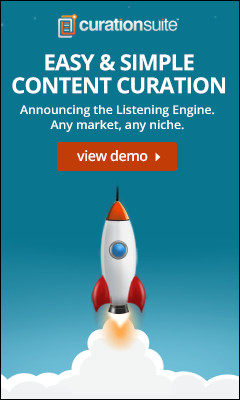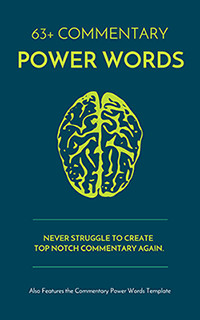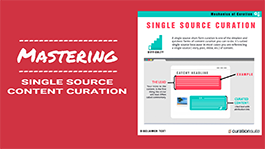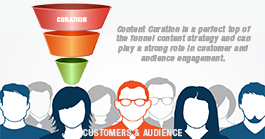Today we will cover two technologies that affect you as a publisher.
The first one is Accelerated Mobile Pages or AMP and the next one is Instant Pages soon to be released from Facebook.
We will cover what both of these technologies are, what they mean for you as a publisher and how you can actually start to implement or take advantage of some of these technologies right now, especially if you are running WordPress.
Not only that, we will talk about:
- What this means for the future of you actually reaching your audience
- What it means for your future monetization efforts
- How you can really take advantage of these two technologies
- how you could really leverage this to continue to have or have success with content marketing, content curation and any of your publishing efforts.
Now, the first question you might have is, is this really stuff that I have to pay attention to, is it something I have to implement in my site? I can unequivocally say, with what’s happening on the publishing landscape and the distribution landscape, these are two things that you really need to implement in your own site.
AMP which is Accelerated Mobile Pages and we will get into the details of both of these here in a second, but Accelerated Mobile Pages, you can implement right now. With the Instant Pages release from Facebook, that’s not something that will be released to the general public until April of 2016.
You have got a little time to plan and get prepared for that. Not only that, we’ve put together a tutorial video that walks you through installing the exact plugin that you can use for using both the AMP technology or implementing the AMP technology and Instant Pages when it is released. You will definitely want to check that out, that’s on the Curation Suite blog.
Accelerated Mobile Pages.
Accelerated Mobile Pages is an open source project that’s been released by primarily Google and Twitter. There has been a couple of other organizations and companies that would have helped with this open source project. It’s an open source project that really looks to make loading of content on a mobile device almost instantaneously. This is important for both Google and Twitter or anybody that’s linking the content, because they want that content to load quick.You are on a mobile device, there’s bandwidth concerns, there’s also, it’s a smaller screen and you really want for the experience to be the best for the user. You want that article to load really quick, almost instantaneously just like it does typically on broadband if you are in a browser. This technology what it really does is it strips out a lot of the unnecessary stuff that is loaded in a standard webpage. Even if you have a theme that is mobile friendly and it scales down, it still loads a lot of things that really is what you would consider bloat. It really does really slow down that page from loading.
There’s a couple of other things that happen behind the scenes with AMP as well, but that’s really the reason why it was created. It’s created to really make it lightening fast to load content on mobile devices. Of course Google wants this because of what Facebook is doing, but also for other things, but Google does this because they want the experience for the user, at least in theory, right? The experience for the user to be quick.
When you do a search on Google for a piece of content, they are going to redirect you to another site. They want that to load right away, because then you will continue to use Google, it will continue to be a really great service. Same with Twitter, if they are linking on to another site, they want this to load quickly, they want everything to be seamless. There’s a little bit more to this, but for the general understanding of what this means, that’s the way to look at it.
AMP and WordPress
One of the things to keep in mind with AMP is that you can actually install this right now. There’s a plugin, we actually have a tutorial video as I mentioned that walks you through installing this plugin. It works just like any other plugin really. What it does though is it will strip out a lot of the look and feel of your site … Actually all the look and feel of your site. You really just have a logo at the top and it will be just your raw content.
Also another thing that this technology does is that images will only show up when the user actually scrolls. It doesn’t load all the image. If you know, in a standard webpage, typically on most sites when you are actually loading that page, it will load all the images in the background regardless if you scroll to them. With AMP, this will only load the images when the actual user actually scrolls down there.
There’s definitely benefits to this technology, especially in a mobile device and a mobile environment, but that ‘s really what it’s designed for, that’s really what’s happening. Now, here’s how this will work on a technical level, is that when someone searches for your site and you have AMP enabled on your site and they are on a mobile device, they will be served the AMP version of your page. You can see that with the plugin that we mention in the tutorial video. You can see how that will look like. It’s really just a streamline version of just your content.
Should You Use AMP in Your Website or Blog?
I do suggest that you actually do implement this in your site, AMP that is, because it’s something that Google have pushed. They haven’t said that they are going to prefer sites from it, but there has been at least initial talks and especially in the SEO world that anytime Google gets behind something like this, they are nudging you in a certain direction.
You have already seen in search results, they are starting to test in search results, putting little notes next to links. It says, “This webpage might be slow.” They will know that you are on a mobile device and they are going to say, “Hey, if you click on this, it’s going to be a little slow. Be prepared for that.” You can just reason that that if you are running AMP and it’s going to run instantaneously, that won’t show up next to that result. The user is more opt to actually click on your link and read your content, consume your content and really convert. That’s what it’s about.
This is a technology, while there are some drawbacks as in it takes away your branding, it really does give you just like a raw minimalistic view of your content for the user, but it is something that I think is an advantage, it’s something that you do need to explore and actually implement in your site.
Lets talk about Instant Pages and how this differs a little bit from AMP.
Facebook Instant Articles
This is a release that is set to be released. It’s already been in use by some large publishers already and you’ve probably already heard about this, but the large publishers like New York Times, National Geographic, BuzzFeed, NBC News and others have already been using this.
What this is, this is a release from Facebook and it is called Instant Articles. Basically when you see a story in Facebook and your news feed, instead of it taking you to an external source to that website, you are going to read that article right within your stream of Facebook. Now, it might work a little bit differently, you might go to a page, as with any technology this might change, especially once they release it here on April, 12, 2016.
That’s the general idea and the reason for this … There are a couple of reasons for it, with Facebook it’s a little bit different than Google at least. The first reason is that that will be instantaneous. If you think about it from Facebook’s perspective, that of course … The first thing Facebook wants to do is they want to keep people in their ecosystem or keep people on their app. They don’t want people leaving.
If they can host content that other people are producing on their platform and you never leave their platform, that makes their platform even more valuable. Not only that, they get the data from that, they get the information from that, they get so much value from that. If they can not twist a publisher’s arm, but if they can basically force publishers to do this, because they have the audience, it’s a good smart move on their part. That’s the way to think about this. That’s what going to happen.
Basically when you sign up for Instant Articles, when you publish content, now it will be available to the Instant Article app, this is a way to look at it, within Facebook. That means that people will be consuming your content as part of Facebook itself. It won’t be something when they are interested in the story they might not link out to your actual article, they will be reading that article and your content right within Facebook.
What Does This Mean for Monetezation of Your Content?
This has some serious implications on how you might monetize, AMP does too and we will get into both of those. I wanted to cover both of these in general before I get into the monetization and what you should do about this, but also on Instant Articles, you should embrace this change as well. Number one, you can’t ignore Facebook. If you are ignoring Facebook now, it’s not something you can ignore, but this might even be an opportunity to be an early adopter of the technology in Facebook to really understand and to be one of the few pew people using it at first.
Of course as with anything, Facebook it will start to mature and more and more people will start using it and of course then eventually they will start pulling in the rains like they typically do. When it drops here and it’s available for the public, I do suggest that it’s something that you actually do distribute your content to. That’s what’s changing here in the publishing landscape. If you think about what these two changes mean, they really are a change in how publishing has been traditionally done.
News organizations and large publishers, a lot of them have jumped on board and they have been able to monetize it. You have an option with Instant Pages for instance to monetize via Facebook or you can monetize with your own ads. You really get the option, at least the earlier adopters have got the option. With AMP, it’s a different type of technology, it have a different purpose, but it is an answer to what Instant Pages is.
Facebook is basically saying, “Look if you use Instant Articles, you are saying we can publish your content within our stream.” Basically they are going to host your content, that’s they have no intention to lead someone else out to your external site. Of course it’s going to say it’s from you and everything else, but really the reader can consume your content all within Facebook. They are not going to leave the platform.
What About Twitter?
Right now, Twitter isn’t doing this, but if they start to say, “Okay, now if you use Accelerated Mobile Pages on your site, what Twitter will do, instead of linking out to your site, what we will do, we’ll just take that AMP article, we’ll just put it into the Twitter stream.” That way, people will stay within Twitter as well and then they will read the article within Twitter as well.
There are some technical limitations why Twitter can’t do that as easily as Facebook can, because the way Twitter is built and there is Twitter readers and everything else. There’s a lot of impediments to Twitter being able to do this as easily as Facebook can, but Facebook is the gorilla in the room and Facebook is the elephant in the room. I guess you could say the biggest animal out there.
What Does This Mean for Distribution?
This does have a potential to really change the distribution landscape in a lot of different ways, meaning that traditionally what you would do is you would share your links out on social media and then people would link back to your site.
They would see your site, they would see your call to actions, they would see your advertisements, they would convert, really that’s the way that you would monetize. Now, with Instant Articles, some of that still will exist, you will still have the ability to probably monetize the same way and maybe even take advantage of Facebook’s monetization.
It’s also another reason why I think this could be a really huge opportunity for people that are curating, because if you really do take advantage of something like Instant Articles, you get good at building a brand and curating, then you can up your scale on content, because curation is the quickest way to do content out there.
That’s another opportunity I think that will exist here and it’s something that we are going to be … Day one as soon as we get access to it, we are going to be diving in and really testing out and seeing how we can really take advantage of a new technology. It’s also something that has a lot of people leery because you are giving up distribution to your content.
This is where really you have to start thinking about this a little bit more strategically, you have to start thinking about, “Okay, if what I’m publishing is not leaving the platform that I’m pointing it in, how do I build my brand? How do I build a relationship? How do I build call to actions within that content that will convert?” That’s what you have to be thinking about with both of these technologies actually, because especially with AMP, if we go back to AMP, AMP is a slim down version of HTML right now. I think it will expand quite a bit here as we move forward and more people will adopt it.
It’s also something that maybe technology could catch up and a year or two down the road, it’s not something that is needed because the bandwidth exist. Now, that doesn’t seem to be on the horizon, but as with technology, that could happen. At this time with the way it is with a streamlined really minimalistic view of your content. That means that you’ve got to get really good at reinforcing your value that you provide.
Ensure Your Reader Knows the Value You Provide
I talk about this a lot with quick start clients that we have, especially with Curation Suite and curating, is that it’s not so much always about the content that you curate, it’s that you reinforce the value that you provide to your audience and a subtle level. What I mean by that is when somebody reads your commentary, when someone consumes your content, they understand the value that you provide the brand, so to say.
This is probably not the best example, when you see a coke bottle for instance, you know what that brand represents or at least what they have spent a lot of money what it should represent. It’s the same way with your content, you want to be able to have a unique perspective, a unique voice, when someone consumes your content, they want to learn more, they want to stick around and this is also where I think what I called inline call to actions are going to be more important, meaning, the actions that are links.
With Instant Articles or with AMP, there’s still links out to external sites. These external sites might go to AMP enabled pages. They will be within the same interface. This is where you need to get good at creating your own inline links, call to actions, to content on your site or to conversion pages on your site. This is an important point, it’s hard to visualize an audio, but basically what you want to do is since you know that look with AMP and Instant Pages, your content is going to be distributed in the streamlined format in this other platform and that links are going to still be in that content, You are going to want to think about when you create content.
You should be doing this anyways, but this is something even more important. When you create content, when you are doing a curation and you are adding your commentary, where can I put a call to action link that is strong if someone is reading this that they would want to click on this? Of course that call to action link should geo to maybe another article that is really more … I hate to use the word sales orientated, but more conversion orientated.
It could be a direct conversion page as well, it could be say, this is something that we talk about and we cover really deeply in our special report, How To Write Five Headlines In Under Three Seconds. It could be something like that or it could be a blog post that you’ve written specifically that does convert, that is designed in a way that if someone consumes it, they will be really to the point of like, “Yeah, I want to implement this strategy, tell me how or tell me what the next step is” or, “Yeah, I really like that product. How do I actually get my hands on that product?”
This is also a way you need to think about, “How do I craft my call to actions in this content that is going to be distributed in these other platforms?” This is also a big change for publishers because the publishing world has traditionally controlled the ability to distribute content. Within a year here, that could change a little bit where basically these larger platforms have control of how your content is getting distributed.
I’m sure you are probably still be able to share links out there and everything else, but as you can imagine, the biggest value out there is attention. If Facebook has found that the users that use their platform really like Instant Articles and that’s a good experience, they are going to be drawing more people’s attention, especially if those monetize well as well. They are going to be drawing more people’s attention towards Instant Articles, actually they are goring to be serving more Instant Articles.
As more people actually pick those up and using it, then it will just become the way that people would consume content on that platform. Obviously, Facebook is the one person out there, the one network out there that can do this at this time. It’s got a lot of people watching, it’s got a lot of big publishers worried and you even no matter what size the publisher you are, you should be watching, you should participate in it and you should be thinking about … You should use it yourself or you should also be thinking about, “Given the rules of this technology, given how it actually is working, how do I monetize with this?”
This is something that often at times we look at and in any social network or anything that we go out there and do with our our own curation, our own efforts, our own content marketing efforts is we look at and say, “Okay, given this network, given how it’s set up and how it works, what’s the best way to monetize or what’s the best way to make this worth our effort and time?” Sometimes it’s only building a brand. Sometimes that’s the extent of what you can do with that network.
I believe with both these changes you can do a lot more, you can convert, you can really give people the reading, consume your content, but it definitely is something that you really have to invest a little bit of time in and think about, especially if you think that publishing the same content that might work on your blog because you have your calls to actions, you have a pop up that maybe shows up or you have an exit pop up or you have other types of things that happen for a conversion, that’s not going to work within these other technologies.
Then that’s where you really have to really consciously think about when you are publishing, “How do I build in my publishing style in what I’m doing, in my publishing? How do I build in the steps necessary to ensure that this works for all of the ways that I’m actually publishing or distributing my content?” To wrap up here, we did put together a tutorial video that walks you through installing a plugin on how to use or that will actually implement AMP, Accelerated Mobile Pages and Instant Articles.
Now you can’t turn on Instant Articles yet, because that’s available to the public on April, 12, 2016, but you can definitely implement AMP now. There are a couple of steps to follow there to make sure that you do it right. Definitely watch that tutorial on our blog. The other thing is that we will be talking about this more. As we move forward we will be sharing more tips and advises, especially when Instant Articles come out. The biggest thing is that I would fully embrace this, this is something that if you own Curation Suite, if you own Curation Traffic, you should be publishing as much as you can.
You need to start thinking of yourself as a publisher and this is one of the things that you need to take advantage of as a publisher is the opportunity to distribute your content, maybe in a unique way and yeah, there are some rules and guidelines that are going to come with this and there are some changes, but what doesn’t change in digital marketing? What doesn’t change these days with technology?







